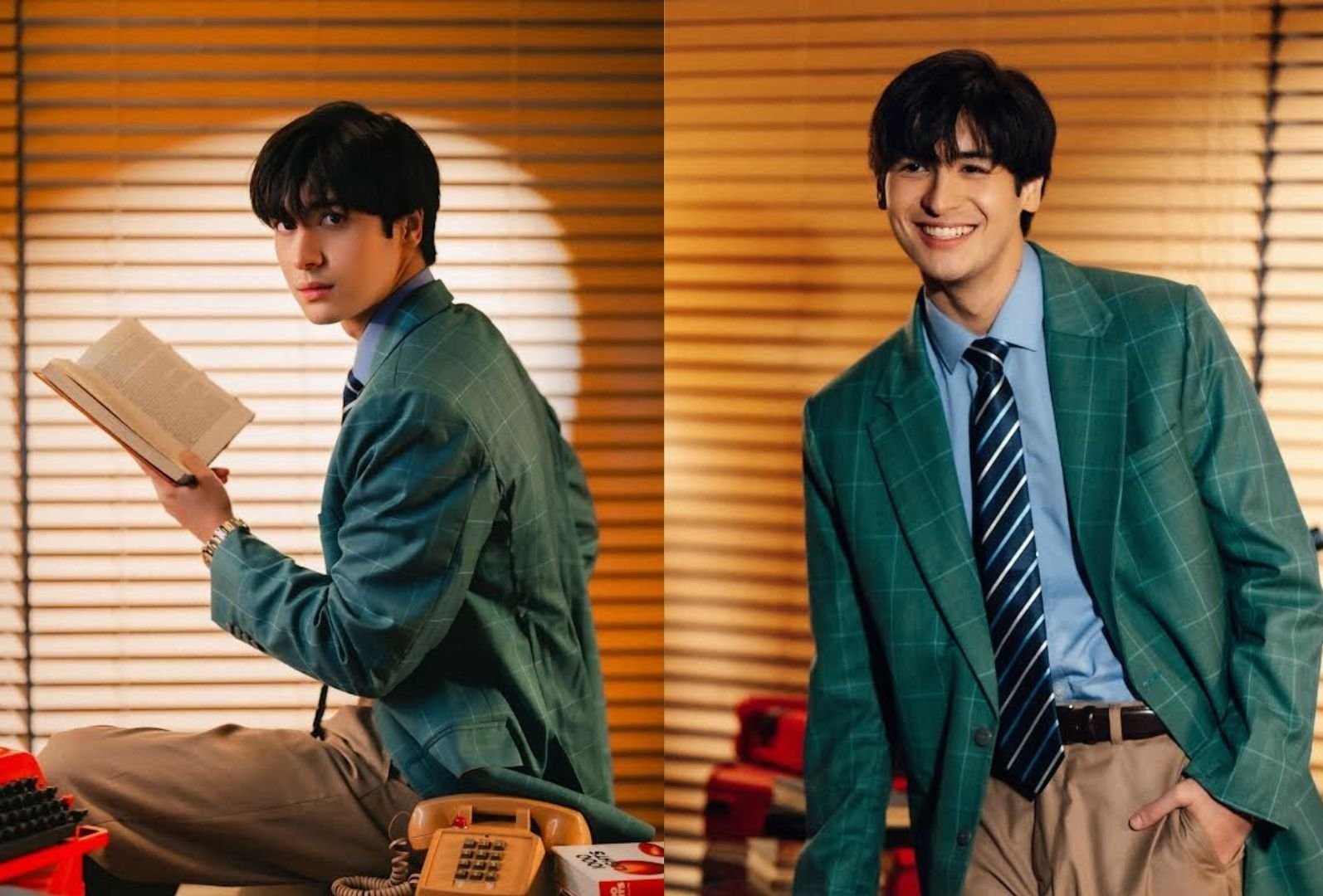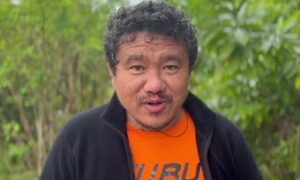
Conclaves, Conventions and the Spirit
Gilbert S.C. Keith-Agaran
An American-born Cardinal Robert Francis Prevost came out to the Balcony to greet the throngs in the plaza below as the successor of St. Peter, taking the name Leo XIV for his Papacy. “Peace be with you all,” he said. The 133 Cardinals elected Pope Leo XIV on the fourth ballot over two days in a Conclave that began on May 7th. Pope Francis passed away on April 21st, the day after Easter.

The process to pick a new Bishop of Rome for the world’s 1.4 billion Roman Catholics has renewed interest in the 2024 movie adaption of Robert Harris’ 2016 novel, Conclave. While a well-done film that captures the essence of the Catholic Church’s traditional sequestering of its eligible Cardinal electors (only those under 80 years old) inside the Sistine Chapel until they elect a new Pope, I preferred the book.
SPOILER (SKIP THE NEXT SENTENCE): I favor the background of the Cardinal elected in the book better than the one in the movie (Filipino rather than Mexican).
As an Episcopalian, I respect the Popes but with a larger degree of separation than the usual Filipino (the Philippines is reportedly 80% Roman Catholic with an estimated 93 million in the Simbahang Katolika sa Pilipinas). Filipinos make up approximately 75% of Catholics in Asia (the next largest community is in India). One of the pre-Conclave favorites was Cardinal Luis Antonio Tagle whom observers believed would likely continue if not extend Pope Francis’ emphasis on social justice issues, the poor and perhaps expanding women’s roles and leadership, embracing doctrinally barred or limited LGBQT and divorced population.

While some may dispute it, the Prelate of Rome can wield outsized influence over the whole of Christendom whether you’re eligible for Roman Catholic communion or not. And what a Pope says, writes and does remains an example for the followers of the Way even today. Pope Francis opened the possibility for divorced Catholics (whose marriages were not annulled) to come back into communion. And subject to some equivocation on its impact, Pope Francis allowed the blessing of same sex couples. Pope Francis will likely be remembered for his 2013 comment, “Who am I to judge” which shifted a view of attitudes on LGBQT people from judgmental to empathetic. Pope Francis also convened meetings to discuss the role of women in the Church.
In retrospect, Pope Francis may have laid the foundation for future changes and reforms. Despite his statements of compassion and openness on various issues, no permanent and decisive shifts occurred during his Papacy. Issues important to American and other first world Catholics may have been bridges too far for the growing number of Roman Catholics in Africa and Asia who adhere to more conservative orthodoxy and personal morality. But notably, Pope Francis named 108 of the 133 Cardinals who elected his successor and that may substantively move the Church towards changes.

The participating 133 voting Cardinals opted for Pope Leo XIV. The naturalized Peruvian citizen was elevated to Cardinal by Pope Francis less than three years ago. Vatican prognosticators (I almost think of them as close cousins of Kremlinologists, British Royal Family watchers and American political podcasters and talking heads) gleaned a couple of expectations from Cardinal Prevost’ election.
The new Bishop of Rome, while Chicago-born and bred (and a Villanova alumnus), has spent much of his life in South America as a missionary, parish priest, bishop and archbishop. He is a member of the Order of Saint Augustine and rose to lead that religious body. Augustinians live focused on community, scholarship and Church service.

They also found his selection of “Leo” for his reign as significant. Leo XIII was the first 20th Century Pope (heading the Church from 1878 until 1903 for the fourth longest reign behind the first pontiff the Apostle Peter, Pius IX and John Paul II). Leo XIII is viewed as the father of modern Catholic social justice—supporting the rights of workers, the dignity of people—and promoting a return to the teachings of Saint Thomas Aquinas—theologically promoting faith using reason and logic. Leo XIII, who rarely left Rome, issued 88 Encyclicals on various religious topics, doctrines and national relations during his 25-year tenure, maintaining a large influence on Catholic social thought to today.
In the age of social media, American newspapers have already reported that then-Cardinal Prevost shared criticisms of the Trump administration. He re-tweeted Pope Francis’ rebuke of Vice President JD Vance, a Catholic-convert, for arguing ordo amoris justifies care for people in our own circles (family, neighbors, community, country) before strangers (migrants, foreigners)—Pope Francis said “JD Vance is wrong. Jesus doesn’t ask us to rank our love for others.” Cardinal Prevost also reposted tweets supporting traditional Catholic views against abortion, death with dignity (euthanasia) and the death penalty.

There have been six Popes in my lifetime: John XXIII (Italian Angelo Giueseppe Roncali), Paul VI (Italian Giovanni Battista Enrico Antonio Maria Montini, who visited the motherland during my only visit to Badoc-Pinili), the short tenured John Paul I (Italian Albino Luciano), John Paul II (Pole Karol Józef Wojtyła), Benedict XVI (German Joseph Aloisius Ratzinger) and Francis (Jorge Mario Bergoglio).
I vaguely understood John XXIII supported a number of changes or reforms coming out of the second Vatican Council he convened (he died in 1963 when I was a barely a toddler), including conducting the Mass in the language of the congregation. John Paul II, the first non-Italian in many years, was perceived as more active in opposing communism but who was fairly orthodox in adhering to conservative doctrine. His successor in 2005, the theologian Ratzinger (Benedict XVI) continued John Paul II’s retrenchment of conservative tenets (he had been John Paul II’s prefect of the Congregation for the Doctrine of the Faith, the successor to body infamously involved in the Inquisition). But on his “retirement” in 2013, Benedict XVI was succeeded by the first non-European, the Argentinian and first Jesuit who took on the name Francis.
The national Episcopal Church at its summer of 2024 convention elected Sean Rowe of Pennsylvania as Presiding Bishop to succeed North Carolinian Michael Curry. Curry was the first black Bishop to serve as Prelate of the Episcopal Church, following Katharine Jefferts Schori, the first woman prelate in the Anglican Communion. Unlike the relatively quick discernment and work of the Holy Spirit in the Roman Catholic Conclave, the selections for all of the Episcopal heads followed a months-long process of discernment (upon the prior Prelates intent to retire announcement rather than death) and then an open vote in convention by both lay and ordained delegates. Presiding Bishop Rowe took office on November 1, 2024.
The Fifth Bishop of the Diocese of Hawai‘i Robert Fitzpatrick recently announced his intention to retire in November 2026. The 18-month process to call the Sixth Bishop has begun with the appointment of a Search and a Transition Committee. No black and white smoke or Church princes locked behind closed doors. But the goal is the same—selecting a leader for the faithful.

Gilbert S.C. Keith-Agaran’s paternal family hails from a hilly forested region of the Badoc, Batac, and Paoay towns later renamed as “Pinili” (Chosen or Selected in Ilokano and Tagalog). Gregorio Aglipay’s revolutionary forces picked the forest as its final stronghold against advancing Americans soldiers during the Philippine-American War. Keith-Agaran’s branch of the Coloma clan were members of the Iglesia Filipina Indepeniente (Philippine Independent Church or Aglipayan Church), founded by Aglipay, which is affiliated/in communion with the American Episcopal Church. He served on the Search Committee that nominated Robert Fitzpatrick as the Fifth Bishop for the Episcopal Diocese of Hawai‘i. He practices law in Wailuku.
The post Dinengdeng & Pinakbet appeared first on Fil-Am Voice.











